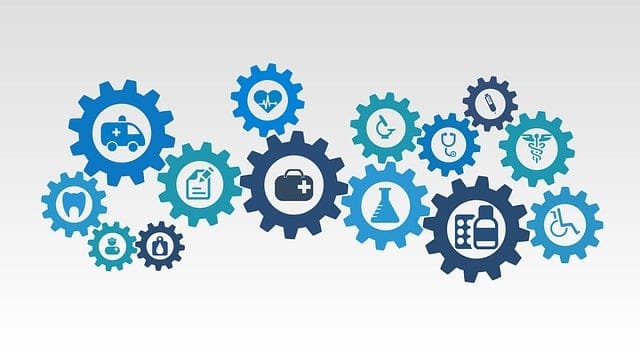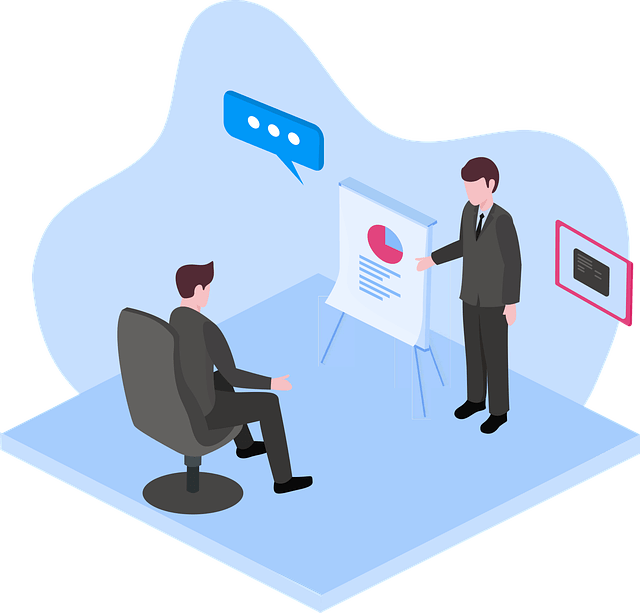In 2024 the use of healthcare software in delivering, managing and monitoring the provision of care in the medical field assumes a critical characteristic. Enhanced operation, efficiency, patient quality and satisfaction and precise administrative services are availed from the protagonists including providers, administrators and patients with the help of the new innovation in software.
This change is mainly facilitated by innovative technologies such as artificial intelligence(AI), IoT devices and big data. Such future advancements enable automation of functional processes, delivery of differentiated patient care and real time information regarding the patients.
Whether it is for conducting tele-consultations, patient documentation through electronic health records (EHRs), or home monitoring of patients, healthcare software is steadily spearheading the transformation of the healthcare systems throughout the world to the betterment of more efficient patient care.
Table of Contents
What is Healthcare Software?
Healthcare software is defined as the application of software technology to address and solve health care challenges. It comprises software that supports doctors, nurses, health managers and citizens in monitoring, registration, booking, charging, diagnosing and telemedicine.
Some of the examples across the dialogue include EHR, telemedicine applications, medical billing applications and RPM tools. Healthcare software supports patient outcomes across the care continuum by integrating processes, boosting communication and optimizing data consistency and organization contributing to a better and more efficient supply of patient-centred care.

Types of Healthcare Software in 2024: Driving Innovation in Patient Care
1. EHR software
EHR software is the core of healthcare software in 2024, which makes it easy to record and handle patient data electronically. It replaces a hard-copy file system by creating an electronic repository for the medical history of any patient along with diagnoses, care plans, lab tests and prescription records. The advanced EHR systems of 2024 have integrated decision-support tools that enable physicians to diagnose and treat patients much more precisely. They are fully compatible with telemedicine solutions, hence in real time direct access to patient data in tele-consultations. Such integration demonstrates how 2024 healthcare software is taking operations to streamlined work and making quality care.
On of the latest trends within EHR software is the development of the predictive tool. EHR systems now previously predict a patient’s health risks and this is used to intervene timely. For example, depending on patient history, AI calculate their risk of developing one or another long-term illness, such as diabetes or heart diseases, for further prognosis.
2. Telemedicine Software
Telemedicine has rapidly grown more and more popular in recent years due to the COVID-19 pandemic and resulting demand for virtual healthcare. Now in 2024, telemedicine software is still around, which has revolutionized the healthcare system offering an opportunity of getting medical care from home. These are key services available in these platforms including video consultations, remote monitoring and digital prescriptions.
Hence today’s telemedicine software is not just about simple remote consultation. It now syncs with wearables and the Internet of Things and lets healthcare providers track their patients’ vitals from a distance. For instance, the patient diagnosed with hypertension puts on a connected blood pressure monitor that sends all the data about the patient’s blood pressure directly to the physician and the latter adjust the treatment accordingly. It also enhances patient’s health since it enables real time data interchange, decreasing face to face communication contact point hence relieving centres and hospitals.
3. Practice Management Software (PMS)
The medical practice software is specifically designed to effectively manage all of the day to day business aspects of managing a medical practice such as appointments, invoicing and record keeping to name but a few. PMS systems in 2024 are more advanced than PMS systems of today equipped with features and functions that interface with EHRs, patient portals and insurance verification systems. It also enables free flow of information between the two systems which relieves much workload on healthcare staff.
Contemporary PMS also have facilities for automatic billing/ coding to ensure that the correct claim has been submitted with less chances of billing mistake. This is especially the case with regard to the present diverse and highly specialized area of health care billing and coding where mistakes in the choice of codes may result in denial of a claim or avoidably long wait for a payment.
4. Medical Billing Software
Medical billing software in particular aims at automating the coding, payment claims and the tracking of the same. Finally in 2024, these systems have adopted artificial intelligence in the execution of the same and enhanced coding and claims submission. One of the areas which AI could be applied for is the automated analysis of medical prescriptive data and administration of billing codes which could otherwise be partially impaired due to human nature.
Also, currently, the medical billing software has enhanced reporting features that give information on the revenue cycles and hence help the healthcare organizations understand the obstacles to cash collections. Medical billing software relieves much of the workload of billing and coding in health care centres hence facilitating flap of the most important function of patient handling.
5. Remote Patient Monitoring (RPM) Software
Telemonitoring applications are now an essential part of chronic illness management systems. RPM systems encompass the use of IoT connected tools to obtain and relay patient health information to the healthcare givers in real time. By 2024, RPM technology has expanded the number of monitoring devices from Wearable ECG monitors to glucose monitoring devices for diabetic patients.
They enable the continuation of health trends in patients over time, detection of complications at an early stage and then management. For instance, a heart disease patient is allowed to wear a connected device which would record heart rate and rhythm data on a constant basis. If the device notices an aberration in the blood’s pH level, it notify the patient’s doctor who may then change the course of treatment, or advise the patient to seek urgent medical attention.
Improvement has also been extended to the integration of the RPM systems with Artificial Intelligence. The use of artificial intelligence in analytics exposes possible health issues that arise and due to advanced data analysis, an early treatment is available.
6. Health care Customer Relationship Management (CRM ) software
Healthcare CRM solutions are tools that are used to map and maintain the relationships with patients, as well as engage them. In 2024, these systems present AI-derived information that the doctors use to promote unique care services. For instance, thanks to big data a CRM system study the medical records, preferences and behaviour of a particular patient to suggest the right treatment regime or health club options.
Other functionality includes omni-channel messaging where the providers communicate with patients via emails, notifications over their mobiles and through the patients’ own portals. Such a three pronged communication strategy means patients are reminded of appointments, follow up medications and other routine checkups. Through improving the ways patients interact with providers, CRM software incorporates ways of increasing patients’ compliance to the recommended treatment plans and health status of patients.
7. Pharmacy Management Software
Pharmacy management software is used in pharmacies with a purpose of easing its running through coming up with a system of organizing inventory, prescriptions and patients records. By 2024, these systems have evolved and work alongside EHRs and other healthcare solutions that give a full picture of a patient’s medication history.
Another component of pharmacy management software is artificial intelligence decision support where a dispenser easily detect incompatible drugs and suggest better drugs for prescription by the doctor. Apart from enhancing patients’ safety, it also means that the operations of pharmacies will become rampant since most of the basic tasks are carried out by the system.
8. Laboratory Information Management Systems (LIMS).
LIMS is critical in determining laboratory processes, which include sample identification and handling, collection of data as well as analysis and reporting. By 2024, LIMS platforms are even more connected to the EHR systems and other POC. It also makes the average of lab results real time hence making diagnosis and treatment faster amongst the providers.
The use of AI and machine learning is also increasing in LIMS systems; especially for data set analysis. For instance, Machine learning algorithms may suit genetic data to diagnose disease biomarkers, making a better treatment plan.
9. Electronic Imaging and Communication in Medicine (EICM)
A radiology information system is responsible for managing workflow and reporting of imaging records for departments of radiology. By the year 2024 the use of RIS platforms has advanced to another level and the systems now make use of AI for image analysis. Other benefits of the AI-assisted RIS system include: The radiologists couldn’t determine the shaded areas in the images of the tumours or the fractures, so the AI-powered RIS system help them to do so.
Integrated capabilities of the RIS platforms make imaging data more available to physicians in other clinical areas of the healthcare system. This brings efficiency and coordination into practice, it also aids in ensuring patients receive proper diagnosis with the shortest time possible.
10. Cyber Security and Regulatory Software
With an increasing adoption of information systems in healthcare organizations, cybersecurity has emerged as a critical issue. By 2024 cybersecurity and compliance software are committed to safeguard patient information and HIPAA/ GDPR guidelines.
They are AI assisted and enable the identification of new cyber threats and attacks in progress, enabling the implementation of countermeasures to safeguard information in healthcare systems and patients’ data.

Subsequently in 2024, healthcare software is transforming the manner and ways in which patient care is delivered, how administrative functions are managed and the protection of data. With innovations like AI integrated EHRs, telemedicine apps, applications for home monitoring, such as Chronic Disease Management, is revolutionizing the delivery and administration of healthcare.
Healthcare software in 2024 enables providers to deliver superior, patient-specific, lower-cost and more preventive care and reduces the operational pains. These solutions are changing with the march of information technology towards the next level and eventually become part of the arsenal tools designed to enhance patient benefits for the provider. The efficiency and effectiveness enhance the delivery systems of healthcare through greater patient involvement. As healthcare software for 2024 is being developed, it is going to increasingly replace business cycles with streamlined operations that enable the delivery of more personalized, proactive care directed towards improving patient outcomes.

How does Himcos help?
Himcos offers Business Software Modernization services with the heft of healthcare background. Instead of offering a team of experts, its bringing proven success to the table, demonstrated through case studies from the health care arena. Here you’re getting not skilled hands but the best minds in the industry, in order to deliver high-quality and results of modernization for your projects. Our experts improve application performance, reduce costs, improve security and foster innovation, all in the provision of scalable, secure and high-performing solutions. With deep expertise in healthcare systems, we are uniquely situated to address the significant demands health care organizations face in making both efficient and superior delivery to patients.



